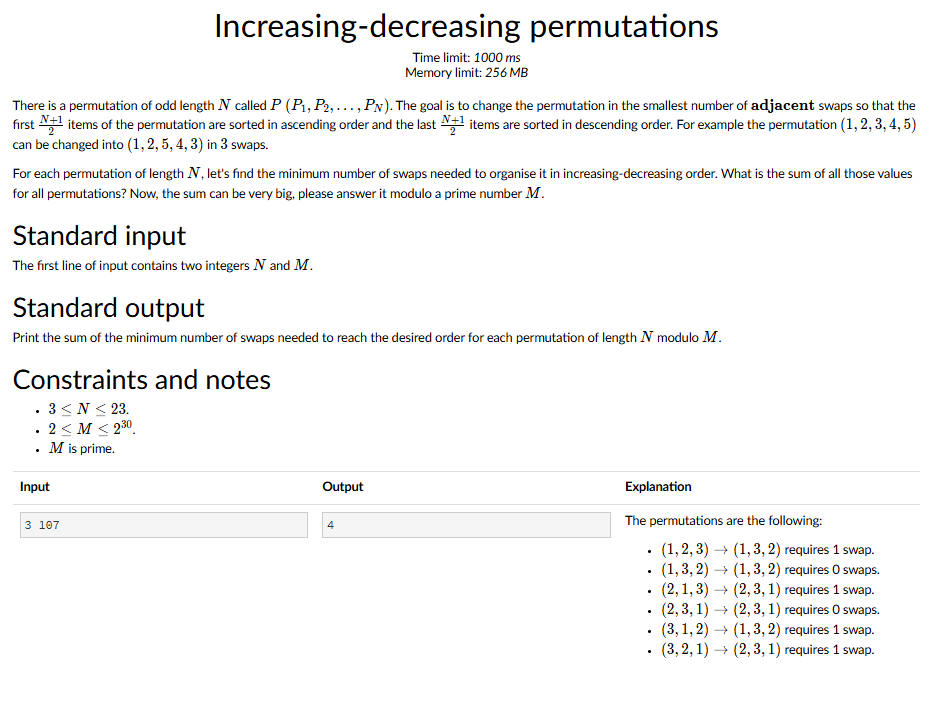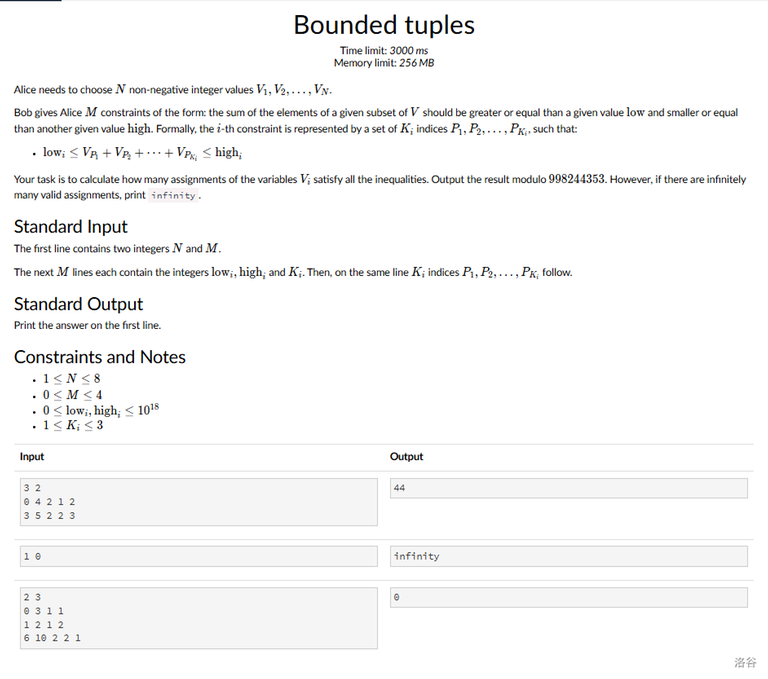→ Pay attention
Before contest
CodeTON Round 9 (Div. 1 + Div. 2, Rated, Prizes!)
14:10:44
Register now »
CodeTON Round 9 (Div. 1 + Div. 2, Rated, Prizes!)
14:10:44
Register now »
*has extra registration
→ Streams
→ Top rated
| # | User | Rating |
|---|---|---|
| 1 | tourist | 4009 |
| 2 | jiangly | 3823 |
| 3 | Benq | 3738 |
| 4 | Radewoosh | 3633 |
| 5 | jqdai0815 | 3620 |
| 6 | orzdevinwang | 3529 |
| 7 | ecnerwala | 3446 |
| 8 | Um_nik | 3396 |
| 9 | ksun48 | 3390 |
| 10 | gamegame | 3386 |
→ Top contributors
| # | User | Contrib. |
|---|---|---|
| 1 | cry | 167 |
| 2 | Um_nik | 163 |
| 3 | maomao90 | 162 |
| 3 | atcoder_official | 162 |
| 5 | adamant | 159 |
| 6 | -is-this-fft- | 158 |
| 7 | awoo | 157 |
| 8 | TheScrasse | 154 |
| 9 | Dominater069 | 153 |
| 9 | nor | 153 |
→ Find user
→ Recent actions
There are $$$n$$$ points on the line, the position of $$$i$$$ th point is $$$p[i]$$$. there are Q querys. you will got a segment which length is $$$D[i]$$$, ask at least how many segments are needed to cover all points.
$$$ 1 \le n \le 10^5 $$$, $$$ 1 \le p[i] \le 10^9 $$$, $$$ 1 \le q \le 10^5 $$$
n points on 2D-plane. $$$n \ge 3$$$.
Exist three points a,b,c that $$$1 \le \frac{dis(a,b)}{dis(a, c)} \le \frac{n+1}{n-1}$$$.
How to prove that?
Codeforces (c) Copyright 2010-2024 Mike Mirzayanov
The only programming contests Web 2.0 platform
Server time: Nov/23/2024 03:24:17 (h2).
Desktop version, switch to mobile version.
Supported by
User lists


| Name |
|---|












